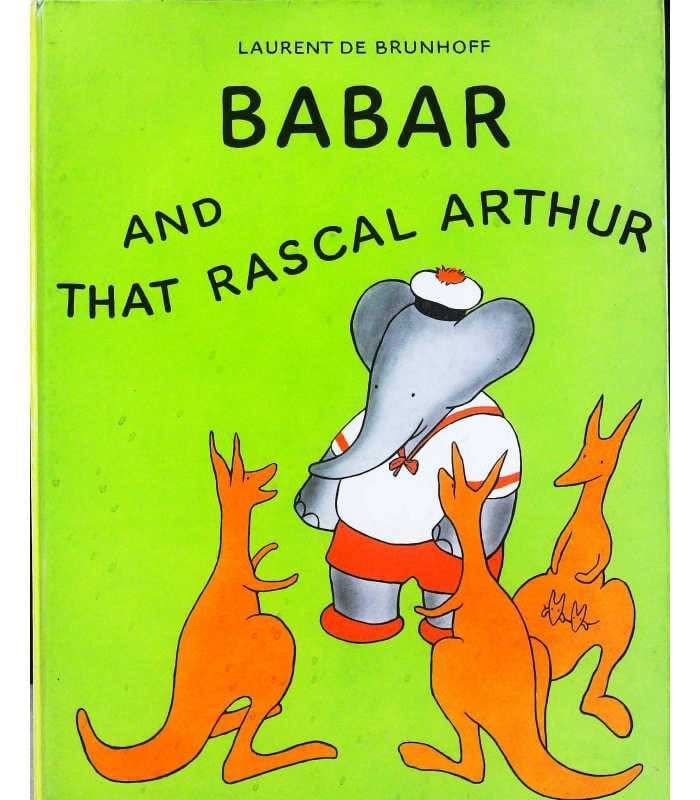Laurent de Brunhoff, author and illustrator of more than 40 Babar the Elephant books – obituary

- Oops!Something went wrong.Please try again later.
- Oops!Something went wrong.Please try again later.
Laurent de Brunhoff, who has died aged 98, was a son of Jean de Brunhoff, creator of the perennial children’s favourite, Babar the Elephant; after his father’s death he took over the character and went on to publish dozens of books about the friendly pachyderm who rules over Celesteville, turning Babar into a global franchise.
It was Laurent’s mother Cecile who gave the world Babar. In the summer of 1930, while she and her children were staying at her father’s country house in the Île-de-France, her four-year-old son, Matthieu, was finding it difficult to sleep so she made up a story which she hoped would soothe Matthieu and his five-year-old brother, Laurent.
Its protagonist was a baby elephant who is left to fend for himself when a cruel hunter shoots his mother dead. Cecile de Brunhoff went on to invent a story in which the young elephant flees to the town and is adopted by a rich old lady who dresses him in elegant clothes and introduces him to the world of men. Before long, however, he misses his fellow elephants, and he returns to the jungle where, after the King of the Elephants eats a bad mushroom and dies, Babar is crowned king of the elephants and marries his queen, Celeste.

Enchanted by the story, the children told it to their father Jean, an artist, who wrote the story down, changed the elephant’s name from Bébé to Babar, strengthened the plot and accompanied the text with his own delightful illustrations.
Jean de Brunhoff made the book as a one-off to amuse his children, but when his brothers saw it, they persuaded him to let them publish it through the family-run publishing imprint Le Jardin des Modes, part of Condé Nast.
L’Histoire de Babar: le petit éléphant (“The Story of Babar”) appeared in 1931 and English-language editions were published in Britain and the United States in 1933. Jean de Brunhoff wrote five more Babar books and by the outbreak of war the little elephant had become a children’s favourite in France, while the books were selling in their millions abroad.
In 1937, however, Jean de Brunhoff died of tuberculosis at the age of 37. No one else added to the series until after the war when Laurent, who had been 12 when his father died, picked up the baton.

He trained as an artist at the Académie de la Grande Chaumière and began living as an abstract artist in Montparnasse. At the same time, however, he taught himself to draw Babar and his friends in his father’s style. His first contribution to the series, Babar et ce coquin d’Arthur (“Babar’s Cousin: That Rascal Arthur”), was published in 1946.
“I looked carefully at my father’s drawings and tried to make mine look the same,” Laurent recalled in 2002. “Just because I’m an abstract painter doesn’t mean I can’t draw, it’s just a different way of expressing things. I tried to be as faithful as possible to the original books, but did my own stories using Arthur the teenager, because he was closer to me [in age] than Babar... I never felt any kind of conflict with my father’s creation. It felt like Babar became my own creation.”

He went on to write, illustrate and publish more than 40 titles, among them Babar Comes to America (1965), Babar Goes to the Moon (1969), Babar Learns to Cook (1978) and Babar’s Little Circus Star (1988), later books being published by Random House. The books were adapted for a television series and animated features such as Babar: The Movie (1989) and Babar: King of the Elephants (1999), and spawned a flourishing trade in merchandise.
Inevitably a series which began at the height of French colonialism came in for a certain amount of critical deconstruction. The Chilean intellectual Ariel Dorfman denounced Babar as a symbol of colonialist oppression for the way he brings Western values to the elephants, and attacked the books for rationalising “the motives behind an international situation in which some countries have everything and other countries almost nothing”. The sociologist Herbert Kohl published a book entitled Should We Burn Babar? and accused the character of racism and sexism.

Laurent de Brunhoff, too, confessed to being a little embarrassed by some of his earlier stories and especially regretted Babar’s Picnic (1949), in which local African inhabitants appear as spear-carrying savages and the young elephants, Alexander, Pom and Flora, dress in American Indian-style short skirts and feather headdresses. At his request the publishers withdrew it.
But the Babar stories, with Laurent de Brunhoff’s captivating, witty illustrations, never lost their appeal. Babar’s Museum of Art (2003), in which Babar and Celeste build a museum to house their collection of paintings, for example, featured faithful renditions of original masterpieces – Munch’s The Scream, Seurat’s Sunday Afternoon on La Grande Jatte, Botticelli’s Birth of Venus – but with elephants instead of people.
And Babar moved with the times. Babar’s Yoga for Elephants (2002) came with the disclaimer: “This book is intended for elephants interested in yoga. Humans and other animals should consult books written specifically with them in mind.”
Laurent de Brunhoff was born in Paris on August 30 1925, the eldest of three sons of Cecile, a pianist and professor at the École Normale de Musique, and Jean de Brunhoff, scion of an artistic family whose father published the lavishly illustrated programmes of Diaghilev’s Ballets Russes, and whose brothers held senior positions in Condé Nast.
Laurent made his first contribution to the Babar oeuvre aged 12 when he was asked to “colour a few pages” of two books that had not been completed before his father’s death. He always knew that he wanted to be a painter, but in later life admitted that he had never been able to make money out of his own abstract paintings because, although he exhibited them, they never sold: “Babar became my life.”
De Brunhoff was made a Commandeur de l’Ordre des Arts et des Lettres, the highest official honour that an artist can receive in France, and a Chevalier of the Légion d’honneur.

In 1951 he married Marie-Claude Bloch. The marriage was dissolved and in 1985 de Brunhoff moved to the United States to live with the critic and biographer Phyllis Rose, whom he had met a a dinner party in Paris in the early 1980s. They married in 1990 and she helped him with the text to many of the later Babar publications, including the character’s “swan song” – Babar’s Guide to Paris (2017).
She survives him with a son and a daughter from his first marriage.
Laurent de Brunhoff, born August 30 1925, died March 22 2024

